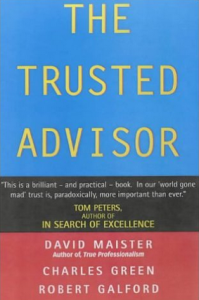Could better collaboration in your business produce more profit?
How does a business get more return from its existing assets? It is easy to become obsessed with winning new business, entering new markets, creating new brands and more – when the chances are you have untapped millions sitting in your office. You just need to know how to unlock it.
We all talk about people being our greatest asset – but from all the clients I have worked with over the years, I think making that statement a reality is probably one of the hardest parts of running a business.
There is a theme at the moment in businesses about ‘collaboration’ – getting a whole business to act as one team. Here I share my thoughts about why this is so important, how you get this to work in reality – and what it will do to your bottom line if you get it all to work.
1. Why do collaborative teams improve business performance?
Nearly all businesses are built on a hierarchical and ‘silo’ structure.
Look at any board and you typically have – apart from the CEO – directors of finance, marketing, corporate relations, HR and usually heads of sales by territory or products plus some will have strategy, global supply and productivity.
Each of these directors will typically be leading teams who report to him or her as the director. Which immediately creates a silo structure.
The reality is that business is done in a matrix. If you want to launch a new product, you would want to involve the strategy team – how does it fit with the strategy; marketing as they can advise on target audience, gaps in the market and will promote the product; the sales teams of course; but also finance – do we need investment and how does that fit cash flow; and production – can we make it, at what cost?
The trouble with the silo way of working is that each of these areas works as a team, brought in to ‘work with’ say, production or marketing – rather than that being the fundamental way of working. So you can hear it now, marketing then complains they are brought in too late ‘we could have told them this product will offend a traditional audience in Africa’ or production say ‘no way can we get supplies of these materials for a spring launch’.
Collaboration means that products meet customer needs better, get to market quicker and deliver better sales and profit. Your business flies.
2. How to build collaborative teams
Lynda Gratton and Tamara Erickson share eight ways to build collaborative teams in their Harvard Business Review article.
They say “Although teams that are large, virtual, diverse, and composed of highly educated specialists are increasingly crucial with challenging projects, those same four characteristics make it hard for teams to get anything done. To put it another way, the qualities required for success are the same qualities that undermine success. Members of complex teams are less likely—absent other influences—to share knowledge freely, to learn from one another, to shift workloads flexibly to break up unexpected bottlenecks, to help one another complete jobs and meet deadlines, and to share resources—in other words, to collaborate. They are less likely to say that they “sink or swim” together, want one another to succeed, or view their goals as compatible.”
3. The trust equation
I am a great fan of David Maister who wrote the famous ‘The Trusted Advisor’. In this he outlines his trust equation, below. This is generally used in the context of customer and client relationships, but it works just as well for team building and collaboration internally.
This says that the more credible, reliable and intimate a person is with their client (intimacy in this context is referring to the safety and security we feel in the relationship!), then the more we trust, share and the more effective the relationship.
And in contrast, the more a relationship is about ‘I’ then the lower the trust and effectiveness.
So how do you create the trust equation internally within a business?
4. Creating internal trust and collaboration in a business
I have recently been running executive education programmes for a financial services group. We purposely brought together senior people from banking, insurance, wealth management and other areas to work together on the programme. Look for as many opportunities as possible to mix up people from across the business.
With another client, we took a project management team – let’s say they were a mixed team looking at launching the new product I mentioned above. We got them to produce a TV bulletin on their product by the end of the day. This approach works really well as it forces pace, gets people to understand each other’s areas quickly and by the end of the day everyone felt they had been working together for years.
If you are going to get the best out of your people, they need to know and trust each other. The art is developing outstanding internal communications programmes that deliver this – not just newsletters and intranets.
5. Put the customer at the heart of the business
How many meetings have you attended where the customer was not given a passing glance, let alone the focus of the discussion? This can be a difficult culture change to achieve, but you want teams to change their mindset so they work together for the benefit of their customer, not the division.
6. Business structure should follow strategy
I was recently asked to contribute my thoughts on strategy for a paper that Whitecap Consulting is writing (it should be out in a few weeks, do look out for it!). I focused on how the whole business must get behind the strategy – and this applies to how you structure your business.
Years ago, Richard Branson gave a talk on how his businesses innovated. The bit that struck home was he said he never allowed a business unit to get bigger than 50 people – and that included all the finance, marketing, product development and customer delivery. He said it broke all the rules of economies of scale that most businesses look for, but he didn’t believe in head office functions. He thought small units stayed closer to their customers, were nimble and more profitable!
I suspect he hasn’t managed to achieve that with Virgin Trains, but it is an interesting concept to keep your teams small and working together to ensure real customer focus.
Whatever you do in your business, I believe collaboration and team-working are one of the most important elements for success. One thing is for sure, you can have the best brains in the world but if they work in isolation they will deliver little.
Do you have tips to share about how to do this effectively – especially in the larger, global businesses?











